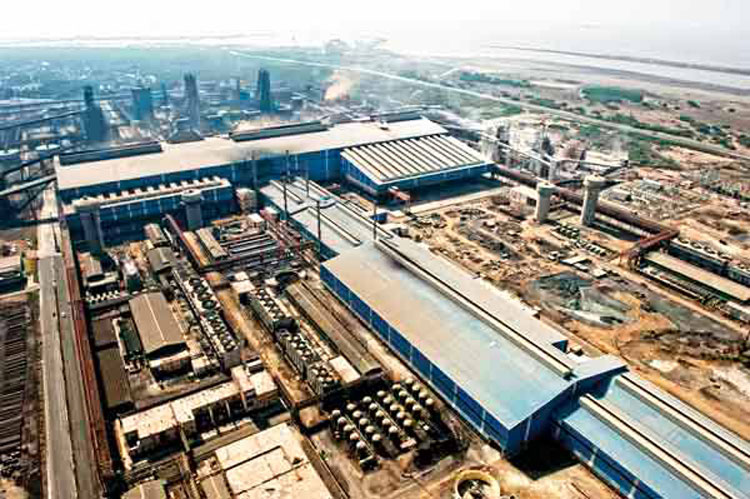The Union cabinet has approved an amendment in the Insolvency and Bankruptcy Code (IBC) that restores the “waterfall mechanism” which determines the order of precedence while paying out the dues of creditors of a company forced through the hoops of the bankruptcy resolution process.
The move will effectively negate the implications of the judgment handed down recently by the National Company Law Tribunal in the Essar Steel case and ensure that it doesn’t set a legal precedent for deciding similar cases.
The waterfall mechanism, which has been spelt out under section 53 of the IBC Code, places the workmen of the company at the head of the queue, followed by financial creditors (mostly banks) and operational creditors who do not have a charge on the assets of the company.
The NCLAT verdict had virtually rejected the priority principle for the payout of dues.
A preliminary reading of the fine print of the seven amendments approved by the cabinet, which has not been made public as yet, restores the so-called waterfall mechanism.
Banks and financial institutions, both Indian and foreign, were miffed by the July 4 ruling of the NCLAT in the Essar Steel case which cut the payout to secured creditors by a third and increased the money that was to be farmed out to operational creditors who had discovered to their dismay that they might not recover anything under the resolution process.
The amendment that has now been passed with retrospective effect will give financial creditors who did not vote in favour of the resolution plan the opportunity to receive the higher of the sum as determined by the “waterfall mechanism” or the liquidation value of the corporate debtor had it been distributed under the terms of section 53 of the code.
“This will have retrospective effect where the resolution plan has not attained finality or has been appealed against,” says the amended provision passed by the cabinet.
Before the committee of creditors call for bids, they carry out an evaluation of the value of the company should it have to go through a liquidation process. This value isn’t disclosed to the bidders. Since bidders are likely to insist that the creditors take a haircut on their debt exposures, they could bid a sum that is lower than the pre-evaluated liquidation value.
Creditors who do not vote for a resolution plan are unwilling to take a haircut on their loans and reject the measly amount they are offered under the waterfall mechanism.
The move to offer them a chance of getting a higher amount is designed to head off the prospect of prolonged litigation that could hold up the implementation of the resolution plan.
The corporate insolvency resolution process of Essar Steel which has dragged on for close to two years — crossing the mandated 270-day deadline under the IBC process — has yet to reach finality because the lenders have appealed against the NCLAT judgment in the Supreme Court.
“Since the matter is already before the highest court of the land, it is expected to be adjudicated in accordance with the existing legal position and the proposed amendments made now if these are given retrospective effect.
“In any case, the proposed amendment is expected to ensure that the effect of the NCLAT judgment in the Essar Steel case will be limited and not applied as a precedent in other cases,” said Kumar Saurabh Singh, partner of Khaitan & Co.
Laxmi Mittal-owned ArcelorMittal was adjudged the successful resolution applicant for Essar Steel. It had offered to pay Rs 41,909 crore to the secured financial creditors who would have recovered over 90 per cent of their claim. The NCLAT brought down their payout sum to Rs 27,914 crore.
Simultaneously, operational creditors, who were not supposed to get more than Rs 196 crore, were offered a windfall of Rs 11,969 crore under the NCLAT order.
Moreover, Standard Chartered Bank, which was a secured creditor but had no charge on the company’s assets, was going to get Rs 2,116 crore as against Rs 60.17 crore earlier.
330 days for resolution
The cabinet on Wednesday cleared seven amendments to the insolvency code that seek to put in place a 330-day deadline for a corporate resolution process, including litigation and other judicial processes. The code now allows 270 days for resolution.
The resolution plan would now be binding on all stakeholders including the central government, any state government or local authority to whom a debt may be owed.
Further, the committee of creditors may take the decision to liquidate the corporate debtor, any time after the constitution of the committee and before the preparation of information memorandum for the resolution.
At present, the code allows a maximum of 270 days for clearing a resolution plan, but courts have decided to exclude the time spent on legal challenges by various parties from the time frame.
NCLAT had said that the provisions under Section 53, which deals in distribution of assets under liquidation, would not apply in the Essar Steel case “for the purpose of determination of the manner in which distribution of the proposed upfront amount is to be made in favour of one or other stakeholders namely— the ‘financial creditor’, ‘operational creditor’ and other creditors.”
Section 53 clearly lays down the ‘order of priority’ where workmen’s dues and secured creditors get paid ahead of the operational creditors. The amendment today indicates that the same manner of priority will be ordained in a resolution plan.
The proposal approved by the cabinet also talks about an amendment to empower the committee of creditors further with the power to determine the “commercial consideration in the manner of distribution proposed in the resolution plan”.
The NCLAT judgement had said the CoC did not have the power to distribute the amount as that could only be done by the resolution applicant or the adjudicating authority.










